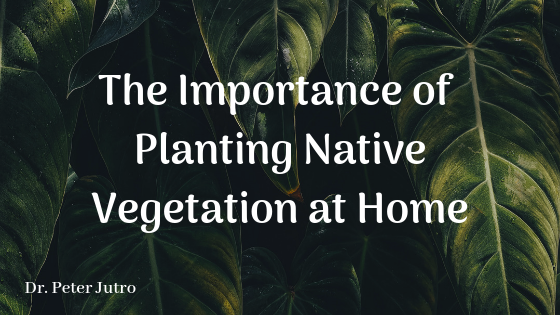When it comes to landscaping, many DIY’ers will go to a big box store to buy plants, often non-native species. There is nothing necessarily wrong with this, but it would be better for the environment to plant North American native species. These plants grow naturally in a particular region and have evolved a symbiotic relationship with native wildlife. They are also well-adapted to the environment, and thus need less care and attention. In many areas, native plants have been destroyed or removed due to urbanization. Homes that are landscaped are planted with non-native grasses, trees and shrubs. They may look nice, but can be hazardous to wildlife, and require a great deal of time and money to maintain.
When you plant locally native plants, you:
- enhance the local ecosystem
- avoid wasting money
- create a unique habitat
- avoid planting invasive species
- eliminate excessive watering and mowing.
Only some non-native are invasive species, and many do not spread quickly. However, those that do spread quickly can cause damage not only to ecosystems, but to properties and structures. For example, Chinese Wisteria is a big problem in Virginia because it spreads rapidly and can grow up to 70 feet with a 15-inch trunk. It has pulled down arches and fences and has even wiped out habitats. Another dangerous invasive plant is the Purple Loosestrife. This flowering plant spreads quickly along wetlands and shorelines. It damages habitats by reducing food and shelter for wildlife. If you aren’t sure if the plants you bought are invasive, you can turn to the Virginia Department of Conservation and Recreation’s Division of Natural Heritage, which has a list of 90 invasive plant species. Other states provide similar localized information.
Some reasons for why people do not choose native plants are because they believe the plants are expensive, do not know where to purchase them or that they won’t be as ornamental as the plants that can be bought at box stores or nurseries. Pricing depends on where you purchase the plants and the species. Native plants can be a little difficult to find, but PlantNative offers a database of native plant nurseries by region and state.
By learning how destructive non-native plants can be, we better appreciate the value of native plants and better understand how they preserve biodiversity and sustains habitats. The prevalence of non-native plants is a prime example of how much damage has been done to the environment, and reminds us that we must each take any necessary measures we can to protect it.

